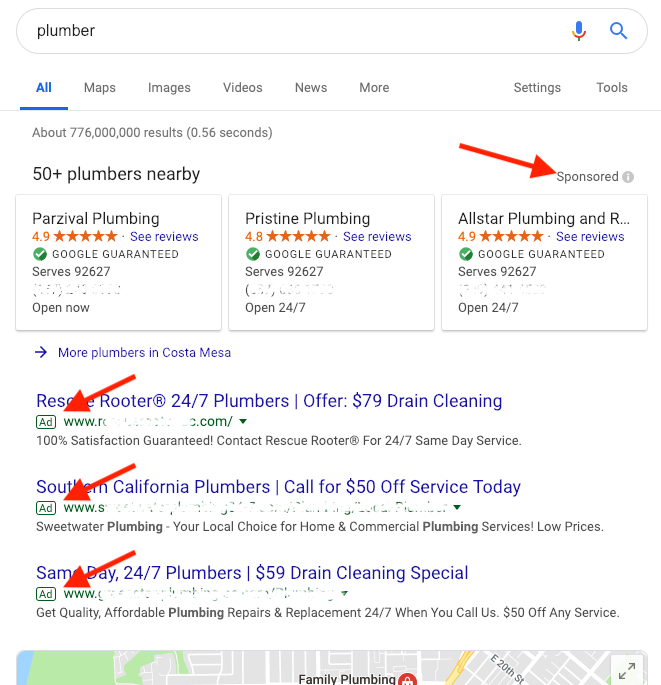The term “digital marketing” covers an awful lot of stuff.
If you’re already promoting your business through the internet or connected devices, guess what? You’re a digital marketer. (Congratulations! Time for a resume update...)
If you’re new to the game, you can use digital marketing to grow your target audience, engage with more leads, close more deals, gain recognition as an authority in your industry, and lots more.
We’ve reviewed 18 of the most-used digital marketing methods below. Think of this as a sampler platter for the many different ways you can grow your online presence and capitalize on more digital revenue.
These strategies and techniques are broken up into three parts — Paid Digital Advertising, Organic Digital Marketing, and alternative marketing channels. (Okay, maybe that’s two-and-a-half parts.) Each has its own strengths and weaknesses. It's up to you (or your agency partner) to decide which will be the most effective for your business.
Get brand new marketing strategies straight to your inbox. 23,739 people already are!
Digital Marketing Part ONE: Paid Advertisements
Paid advertising targets web users looking for products or services like yours with promotions advertisements on their searches.
Advertisers usually pay the ad network each time a user clicks on their ad, which is where the pay-per-click (PPC) model gets its name.
(There are other payment methods — pay-per-impression, pay-per-install, etc. — but PPC is the most common. We’ll call paid ads “PPC” from here on unless otherwise noted.)
PPC campaigns typically break down into two types: Search and Display.
Search-Based PPC
Search-based PPC outlets like the Google Search Network charge for text-based ads because they can provide two things:
- First, an interested audience. Users who search for a product or service online are usually either ready to buy or will be soon. Users who reach a page after clicking an ad are 50% more likely to convert than someone who finds the same page organically.
- Second, prime real estate. Paid ads appear above organic search results by design. Users are far more likely to click the first link that matches their needs than scroll down the page for other options.
Display-Based PPC
Display-based PPC is also dominated by Google. But Facebook, Microsoft (Bing) Ads, and other platforms are also effective for the right business trying to reach the right audience.
Display ads typically appear as some combination of images, text, and/or video. What really makes them useful, however, is where you can engage users with these types of paid ads.
You can, for example, exclusively target prospects who have visited your website already. Separately, you can target high-intent audiences on social networks or third-party websites based on demographics and other identifiers.
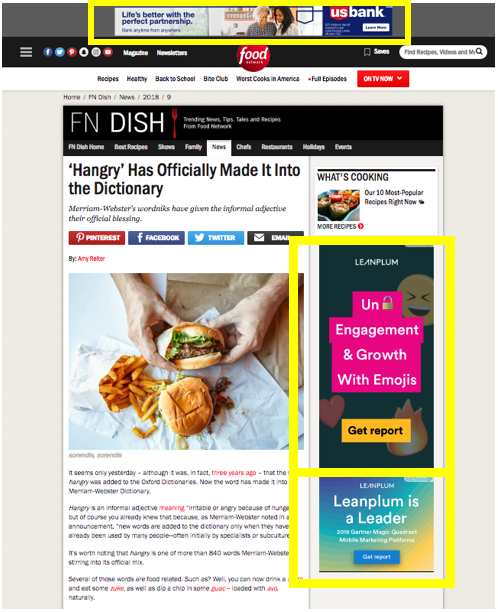
Search and display ads are only two pieces of the greater puzzle. Once you get that click, your lead should be routed to a landing page built for a conversion action. These include making a purchase, sharing contact information, or signing up for a newsletter.
This is where Conversion Rate Optimization (CRO) comes into play. Making the most of these landing page experiences will help ensure that your paid campaigns are generating actual sales/leads/revenue and not just burning budget on clicks.
As a growing and attractive (but humble!) PPC agency, we’re going to break down the most common forms of paid digital marketing. More importantly, we'll share some of the tactics we use to help companies grow in these channels.
With these methods and a healthy dose of tracking, testing, and CRO, your business can significantly grow your return on investment (ROI).
Digital Marketing Part TWO: Tactics That Grow Your Company
1. In-App Advertising
Display ads may have been exclusive to websites once. These days, however, advertisers are finding a larger audience on tablet and smartphone applications.
The numbers don’t lie. Mobile devices were used for more than 50% of web traffic in 2018. And studies show that users engage with apps more today than mobile websites.
Developers can monetize their app’s audience, even if the app itself is free, by incorporating display ads. Digital marketers can track and target demographic information, usage data, location, and in-app actions. This will help you reach a high-intent audience that is likely to convert.
2. Social Media PPC
Speaking of online engagement, social media has so much of it that many of these networks have developed PPC outlets of their own.
Facebook, Instagram, YouTube, LinkedIn, Twitter, Pinterest, Snapchat — each has its own paid ad system for businesses who want to target a slice of their users.
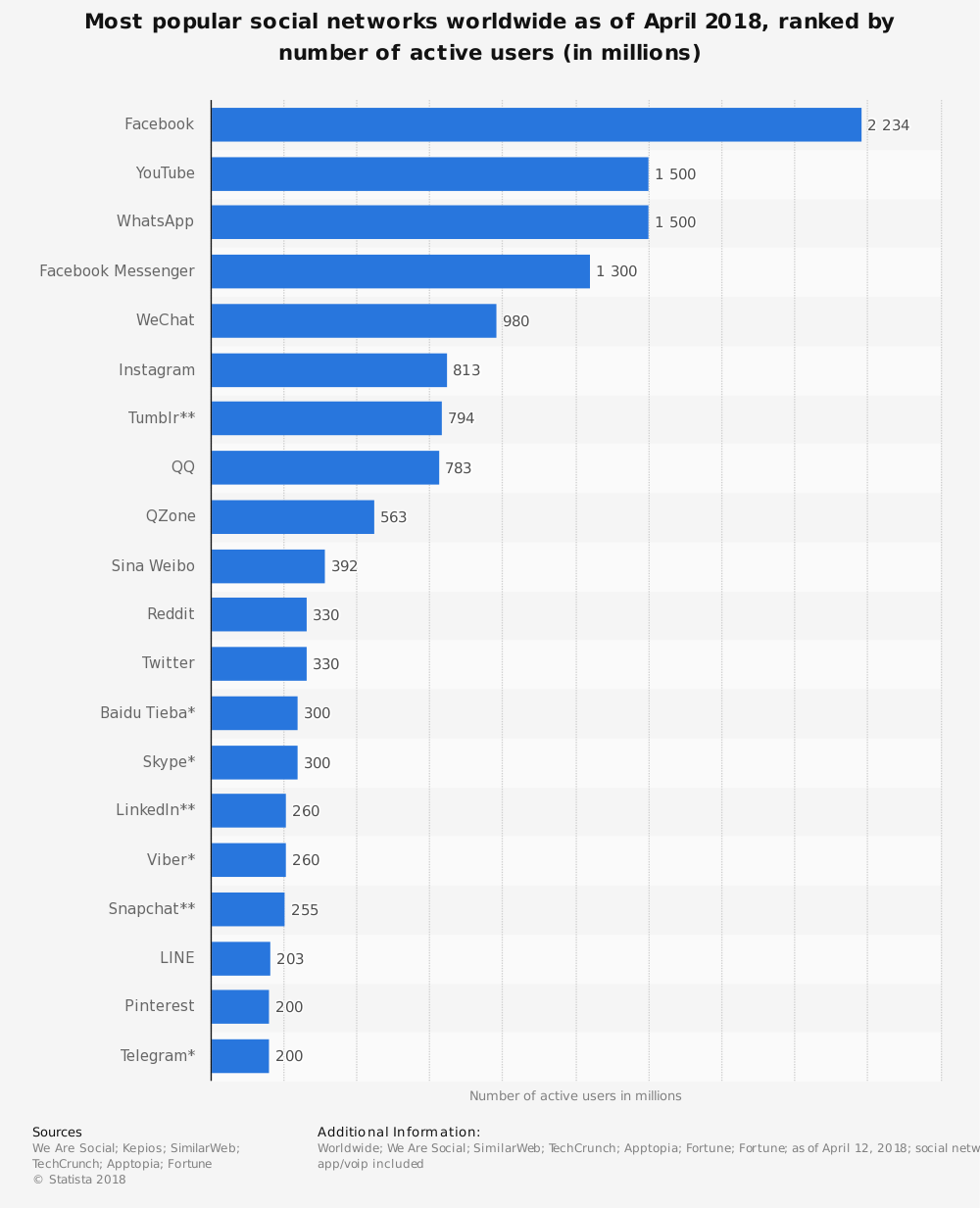
Social media marketing is effective because, like ads in other mobile apps, detailed user information can connect your message to extremely specific audience segments. On Facebook, for example, you can deliver highly relevant ads to users in every stage of your marketing funnel to move them closer to converting.
3. Retargeting
Now that you know a bit more about the “why” and “where” of paid ads, let’s talk tactics.
Retargeting (or remarketing) gives you a second chance to target users who have visited your website and failed to take action. Since these folks have already shown interest in your what you offer, they’re more likely to return and convert than “cold” leads.

This type of advertising is available on lots of display networks, including Google, Facebook, Microsoft Ads, and others. Email can also support remarketing campaigns through subscription click-throughs and personalized follow-up messages.
Retargeting checks a number of boxes for companies looking to digital marketing for growth. You can re-engage with users who abandoned their carts before purchasing, for example. But you can also retarget users who landed on your website organically or reach existing buyers who might want an upgrade.
4. Single Keyword Ad Groups
If what we’ve covered so far seems a little basic, that’s on purpose.
Understanding the ins-and-outs of paid advertising is crucial if you’re starting out in PPC.
But what if you have an advertising campaign running already? There must be opportunities for growth and improvement, right? (Right.)
When we help businesses with active PPC campaigns, we start looking for those opportunities immediately. And the first recommendation is almost always to restructure your existing keyword ad groups.
See, most pre-existing PPC accounts, especially in Google Ads, are created with 10-20 keywords in an ad group based on a common theme.
These “keyword clusters” can bring in traffic, sure. But unrelated broad-match searches can waste your ad budget and drive down your conversion numbers.
To combat this waste and make your digital marketing more effective, we recommend Single Keyword Ad Groups (SKAGs). As you might have guessed, these are ad groups with just one keyword in them.
We usually recommend unique ad groups for high-performing keywords configured for exact match, phrase match, and modified broad match (not standard broad match — it’s too broad). This way you’ll confine your audience to users who match the search terms you’re paying for.
SKAGs can drive growth across a variety of PPC performance metrics, including click-through rates, quality scores, and most importantly, revenue.
5. Single Product Ad Groups
If the name didn’t give it away already, Single Product Ad Groups (SPAGs) are basically SKAGs for the Google Shopping ad network.
Creating ad groups with just one product allows you to track your campaigns more closely than you can when your products are bunched together. SPAGs can offer insights into which products trigger the most searches, how much each conversion actually costs, and much more.
Now, if you have hundreds of products in your inventory, building and maintaining hundreds of unique ad groups may sound a little cuckoo pants.

But you can still use SPAGs as a growth technique by making ad groups for products that are already proven performers. Dedicating budget to your top sellers can boost your traffic and lead to more ROI.
6. Single Ad Ad Sets (Facebook Advertising)
Just like there are Single Keyword Ad Groups for PPC, and Single Product Ad Groups for eCommerce campaigns, you can also leverage hyper-focused ad group (or ad set) structures to optimize your Facebook advertising campaigns as well.
Implementing Single Ad Ad Sets in your Facebook advertising campaigns help align you social paid campaigns towards more focused audiences. And making the most of the audiences you’re paying for is the key to a high ROAS.
7. Solving The Iceberg Effect
The Iceberg Effect occurs when the number of search terms or search queries connected to your keywords gets out of balance.
PPC campaigns with too many search terms — especially ‘broad match’ search terms — inevitably lead to views and clicks from users who don’t convert. Why? Because they aren’t really looking for what you’re offering.
That’s where the iceberg comes into play. Your broad keywords are pulling most of your budget, efforts, etc., so far under the surface that “visible” results like conversions and ROI barely appear.
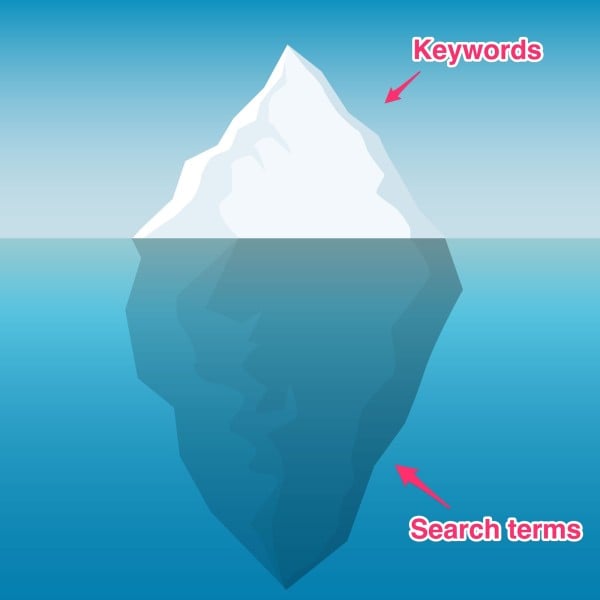
Building smaller ad groups and narrowing your search criteria can make your PPC campaigns more efficient and help you steer clear of the iceberg. Once your ratio of search terms to keywords becomes less lopsided, you’ll likely see campaign metrics improve across the board.
8. Implementing The Gold Pan Technique
Google Shopping ads aren’t configured for keyword-level control of search queries. The Gold Pan Technique, however, is a useful workaround for your campaigns.
The Gold Pan Technique segments traffic into generic, branded, and product-specific searches. These are based on preferred ad groupings like product categories, SPAGs, etc. By customizing campaign priorities and sharing negative keyword lists, you can create a sales funnel geared toward high-intent searches and sniff out the “gold nuggets” that are most likely to convert.

Segmenting traffic also makes it easier to spot ad spend that isn’t producing results and shift your budget accordingly. By optimizing your profitable products and searches, you can improve both your return on ad spend (ROAS) and overall revenue.
9. Improve Conversion Forms With The Breadcrumb Technique
For a long time, it was accepted as gospel that removing all but the most important form fields on your landing page would make users more likely to convert.
This idea makes sense in theory. In practice, however, it turned into a bunch of standardized landing pages that ask for names, phone numbers, email addresses and (if necessary) payment information. Research has shown that the impersonal nature of the request can actually turn visitors off, no matter how compelling your offer and your copy might be.
If you’ve got a landing page that isn’t performing as well as you’d expect, your form might be why. The Breadcrumb Technique can reboot your form and transform this weak link into a strength.

The Breadcrumb Technique breaks up your form into multiple stages. Each stage has its own questions and copy. By starting with anonymous, low-pressure questions in the early stages of the form, you’ll lay the ‘breadcrumbs’ your visitors need to travel down your conversion path.
Our three-stage proposal form below is a good example:
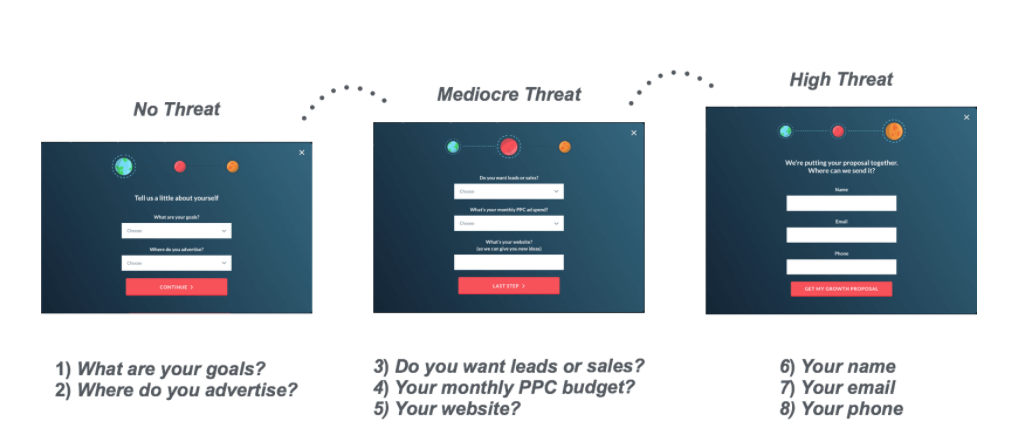
Identifying anonymous questions also shows your audience that you’re speaking the same language, which can generate trust. Leads feel much more comfortable sharing their personal information if they know you’re less likely to abuse it.
Finally, the additional questions will help you filter out unqualified leads who don’t know how to answer your establishing questions.
Converting users more effectively and improving qualified leads are potent ingredients for growth, wouldn’t you say?
Digital Marketing Part TWO: Organic Digital Marketing
All of the strategies and techniques above are designed to get the most out of your paid ad spend.
But what if you aren’t ready to dedicate precious budget dollars to online advertising? Don't worry, you can still expand your digital presence. But you’ll have to do it through Search Engine Optimization (SEO) and content creation.
This path to growth isn’t as direct as PPC. You’ll need to produce valuable, relevant content over an extended period and be proactive about finding your audience.
Rising to the top of Google’s organic search results can take as much as six months of committed effort. Knowing that might make you wish you’d just paid for the stupid ads after all once you’re in the thick of it.
That’s not to say that growing organically can’t work for your company. We’re a PPC agency that uses word of mouth and the methods below to grow our own business. After four years, it’s still paying off for us.
Paid and organic digital marketing aren’t mutually exclusive either. If you really want to dominate your industry niche, you can run PPC ads while you build your content over time to get the best of both worlds.
10. Blogging (Content Marketing)
Your company blog is another channel for engaging your target audience, building your brand, establishing market authority and more.
But if you’re blogging to grow your company, you need to provide useful information and content for your audience, not tips and stories that you find interesting.
You can study as much as you want to learn how to blog effectively, but the most important lesson is to write for your audience, not yourself.
Your expertise shared in the same terms your users are searching for, can build trust with your audience and bring in more qualified leads.
11. Backlinks (Link Building)
Backlinks increase search engine results’ rankings and traffic by getting another website to link to yours from one of their pages. These links can appear on partners or affiliates page, a blog post, or any other relevant location.
Like other “traditional” SEO methods, building backlinks can require a lot of work — in this case, reaching out to other websites and arranging content exchanges or “link swaps” to connect your site to theirs. And the more domain authority your third-party link partner has, the more juice you’ll receive.
12. SEO (Search Engine Optimization)
Although SEO does include the above two tactics, it also goes far beyond just simple content marketing and link building in terms of traffic and revenue generation. SEO, or Search Engine Optimization, also takes your website’s page speed, backend technical code, and other crawl-bot-focused and user-focused algorithms into consideration.
SEO as an umbrella term of organic search optimization focuses on improving your website — and more importantly your key blogs’ and service pages’ — visibility on Search Engine Results Pages (SERPs). It also incorporates facets of CRO in order to make the most of this organic traffic and generate leads/sales and new revenue from organic efforts.
While it may take longer to set up and establish growth with SEO, it can at times provide impressive ROI overall as the investment is lower than ordinary paid advertising.
Digital Marketing Part THREE: Alternative Channels
These digital marketing options don’t fall neatly into paid or organic categories, although many of them can be applied to either type of campaign. Each of these channels is another opportunity to build your brand, generate leads, and grow your company.
13. Email Marketing
Email marketing might not be as new and exciting as some of the digital marketing strategies above, but it’s still an extremely effective way to build relationships with your audience through targeted messaging.
Even if your users don’t open every email you send, they’re more likely to remember you when it comes time to convert (as long as you can stay out of their Spam folders.)
HubSpot says that email marketing works best if you provide relevant, valuable information that will help your subscribers and leads take action on their goals. This can include discounts and sales, new products, informational videos and more. You can even segment leads by where they are in your conversion funnel and send targeted emails to move them forward.
14. Video
Given that today’s online buyers prefer to watch videos than read, video marketing is already a credible and rewarding platform for digital marketing.
Video is the most efficient medium for everything from explaining design concepts to showing users what your product looks like from multiple angles. And if that wasn’t enough, users who consume video content even remember it better than something they read.

The proliferation of smartphones has made it easier than ever to shoot, edit, and publish digital video, so you can engage with your audience regularly and drive conversions. Search engines also give precedence to video results, which can bolster your organic SEO efforts.
15. Podcasts
Podcasts are another useful outlet for companies that want to build their brand and reach a wider audience. The barrier to entry is even lower than video production — all you really need is a laptop and a microphone. Also, ad budgets for podcasts are expected to double by 2021, even as traditional radio advertising is expected to stay flat.
Releasing podcast episodes on iTunes or another platform can boost your organic search engine results. But if you don’t have the time or attention span to start a podcast from scratch, you can be a guest on someone else’s. Podcast appearances can have the same effect as a high-quality backlink, especially ones with large audiences.
16. Webinars
Webinars are another way to share valuable information with your audience. You can invite leads and existing customers to learn about new products, discuss industry concepts, and connect with experts.
Like video marketing, webinar marketing makes it easier for your audience to understand and retain the information you’re offering. Unlike video, however, webinars give you an opportunity to interact with participants directly. You can respond to questions or objections in real time and learn more about your prospects all at once.
Finally, most modern systems make it easy to record and save your session, so you can post your webinar as a video for interested users to revisit at a later date.
17. Influencer Marketing
Instead of paying the social networks themselves for ads, which we discussed earlier, you can connect with a wider social media audience by sponsoring a post by an online personality with a large following.

In a study of more than 300 campaigns, WhoSay found that influencer marketing drew about twice as much engagement as comparable forms of digital marketing.
By partnering with a relevant, reliable influencer, you can increase brand awareness and improve consumer opinion about your business among your target audience.
18. Affiliate Marketing
Influencer marketing can add leads to the top ‘awareness’ section of your conversion funnel. Affiliate marketing, however, is driven by something more measurable — pre-set performance metrics.
Affiliate marketers are partners that receive commissions when users complete defined actions like site visits, form submissions, or converted sales. These low-risk partnerships can expand your audience and drive results because affiliates are incentivized to work on your behalf to ensure revenue. Getting your links on third-party sites through these programs can also increase your backlink and domain authority.
Digital Marketing Wrap Up
Over the past decade or two, digital marketing has grown so much that businesses can’t ignore it if they’re serious about growth.
If you choose to use any or all of the above strategies to help your company succeed, we have just one last request:
Make sure you know what you’re chasing before you start chasing it.
Spending time, effort, and dollars on marketing and advertising won’t do you any good if you don’t have established, measurable goals for your campaign. Whether it’s building your email subscriber list, generating leads, closing sales, or retaining customers long-term, you’ll never know how well you’re doing if you can’t track the data and compare it to your original expectations.
Finally, not all of these methods will work for your business. Depending on your prospects’ preferences, you might see more results from targeted emails than in-app ads, for example. Don’t get too attached to anyone digital marketing method — use the information at your disposal to keep adapting and improving.
Cheers!
